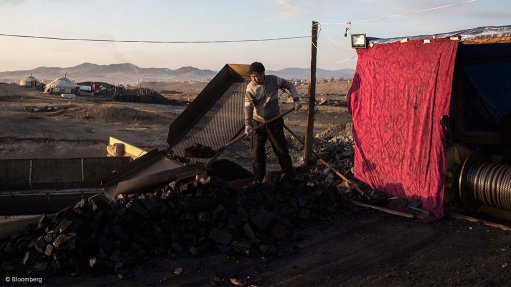
Mongolia coal mine
MELBOURNE – China’s multi-billion dollar Belt and Road Initiative can deliver a major boost for commodities and will add about 150-million tons to global steel demand, according to BHP Billiton, the world’s largest miner.
The plan to develop infrastructure and rebuild ancient trading routes from China to Europe overland and by sea has seen projects initiated worth about $1.3-trillion, according to Melbourne-based BHP, the biggest exporter of coking coal and the third-largest iron ore supplier. Investments worth $313-billion to $502-billion could be funneled to 62 Belt-Road countries over the next five years, Credit Suisse Group AG said last month.
“Everywhere where we see the infrastructure being built, on the back of that there will be economic development that will trigger copper demand, which will trigger energy demand,” BHP’s COO Arnoud Balhuizen told reporters Thursday in Melbourne. “Steel produced in China will be used along the road, and that of course is good for demand for our commodities.”
BHP on Thursday lifted force majeure restrictions at Chile’s Escondida copper mine, where workers carried out a 44-day strike earlier this year, Balhuizen told reporters. Coking coal sales continue to be subject to restrictions following a cyclone in Australia in March, he said.
The producer declined 0.7% to A$23.73 on Thursday in Sydney, extending its decline this year to 5.3%.
The “One Belt One Road” initiative promises “huge demand for resources, services and technology,” and is “an opportunity like no other,” Balhuizen said earlier in a speech. BHP gets about 43% of full-year revenue from China and a total of at least 68% from Asia, according to data compiled by Bloomberg.
China’s plan, lauded by President Xi Jinping as a "project of the century," has the potential to generate about 120-million tons of crude steel demand, according to Citigroup. Increased appetite from infrastructure will support steel even as there’s a slowdown in China’s housing sector, Templeton Emerging Markets Group Executive Chairman Mark Mobius said last month in an interview.
Indian Prime Minister Narendra Modi’s plans for rural electrification, which aim to supply power to every citizen by 2019, and the drive to provide more affordable housing, will also boost commodities and are likely to “have a material impact on demand for coal, iron ore, copper and petroleum,” Balhuizen said in his speech.
BHP sees global demand for potash growing at 2% to 3% a year through 2030, as the world’s population rises and crop demand swells by 50% by 2050, he said. BHP may seek board approval for its Jansen potash project in Canada as early as next June, the producer said last month.